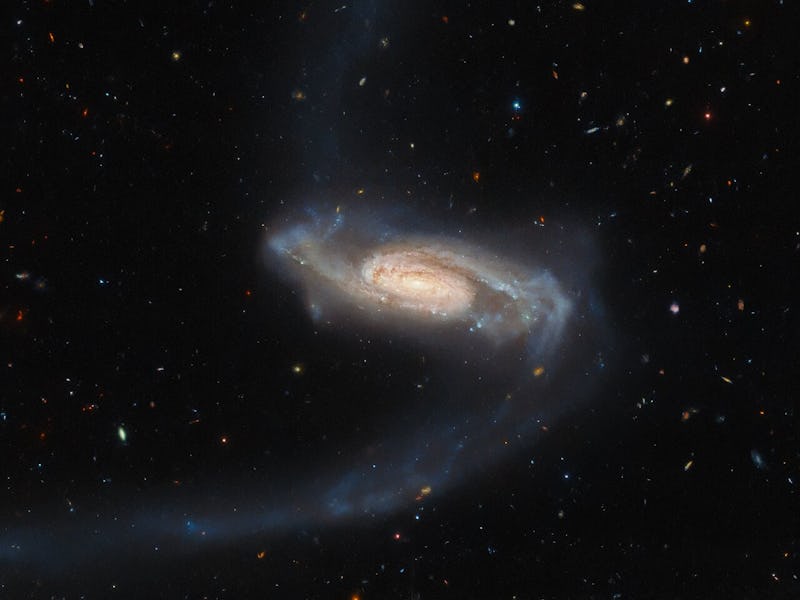Hubble spots a peculiar galaxy with long, twisting space tentacles.
The Hubble Space Telescope is surveying some of the weirdest galaxies in the universe.

ESO 415-19 is a galaxy with a past, but we’re not here to judge.
At some point in its history, ESO 415-19 had a close encounter with another galaxy, and it’s never been the same since. The gravity from that passing galaxy drew parts of ESO 415-19 outward into long, curving streams of stars and dust — and then the other galaxy moved on, leaving ESO 415-19 with its arms still stretching out into space.
Astronomers call these bizarrely long arms tidal streams, and they’re what earned ESO 415-19 its coveted place in the Arp Atlas of Peculiar Galaxies, a catalog of 338 of the weirdest galaxies in the known universe.
The long curving arms reaching out into space from the spiral of ESO 415-19 are called tidal streams, and they’re the product of interaction with another galaxy, when gravity pulled material from ESO 415-19 outward. Also, ESO 415-19 has been through a lot and needs a hug.
The Arp Atlas includes examples of lopsided one-armed spirals like NGC 4027, cosmic train wrecks like the Antennae Galaxies, and ring-shaped galaxies with their centers ripped out because another galaxy barreled right through them. Arp published his catalog in 1966 with the hope that studying different types of “peculiar” galaxies — most of which got their weird shapes in galactic collisions or near-misses — would help astronomers understand the often-violent events and processes that shape galaxies as they evolve.
Ring galaxies, like this merging pair, get their hollow centers when another galaxy passes right through them, dragging away material in its wake.
Now, many of Arp’s collection of misshapen or misbehaving galaxies have become the focus of a whole campaign of Hubble Space Telescope observations.
“These space oddities are spread throughout the night sky, which means that Hubble can spare a moment to observe them as it moves between other observational targets,” says the European Space Agency in an announcement.
One result of that observation campaign is this spectacular image of ESO 415-19 and its long tidal streams. For another stunning example of this phenomenon, check out this older Hubble image of NGC 4676, also called the Mice Galaxies. While ESO 415-19’s cosmic dance partner is long gone, the Mice are in the long, slow process of colliding.
The Mice Galaxies show off their own tidal streams, which look enough like long tails that they gave these galaxies their cute, fuzzy nickname.
ESO 415-19 is about 450 million light years away, meaning that light from our Sun would take 450 million years to reach it. Keep that immense distance in mind, and then ponder this: the multitude of tiny spirals and roundish smudges in the background of this Hubble image aren’t stars. They’re entire galaxies, so much farther away than ESO 415-19 that they appear almost as pinpricks of light even to Hubble’s powerful instruments.